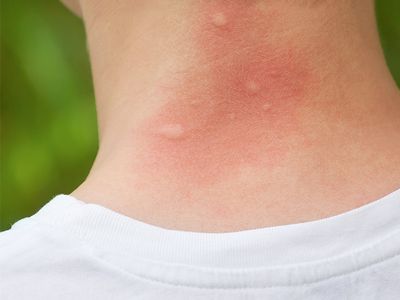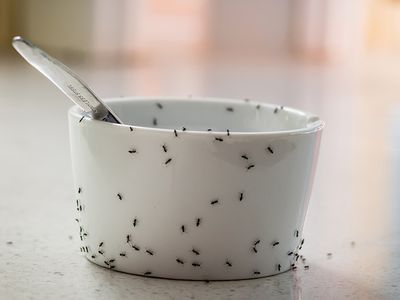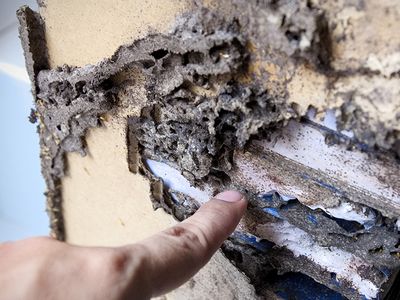Termites In Virginia
While there are over 2,000 species of termites in the world, luckily we only have to worry about two types of termites in Virginia: the eastern subterranean termite and the formosan termite. Both of these pests can cause massive amounts of damage to your home, especially if you don’t know what to look for.
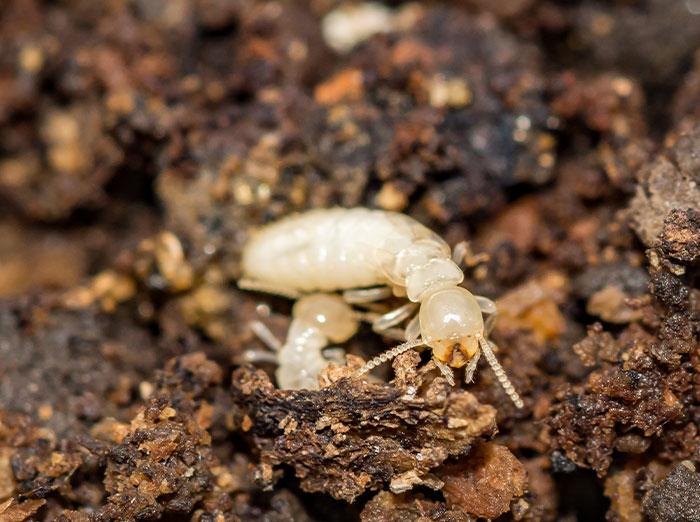
Types of Termites in Virginia
While there are over 2,000 species of termites in the world, we luckily only have to worry about two types of termites in Virginia: the Eastern Subterranean Termite and the Formosan Termite.
Eastern subterranean termites
Found in every state except for Alaska, this species lives in underground colonies that can number up to two million members. They require high levels of humidity to survive and build mud tubes that allow them to sneakily search for food without being exposed to the open air.
What do eastern subterranean termites look like?
Subterranean termites (see image above) are quite small, usually about half the size of the head of a match. They can be any color from white to dark brown. Unlike other species, they do not have wings, except for the swarmers. They also have a soft body that allows them to wiggle through openings as small as 1/8 of an inch. Although some members of an eastern subterranean termite colony are blind, this does not prevent them from performing their tasks.
How to identify eastern subterranean termites
The biggest indicator that you’re dealing with subterranean termites is their mud tubes. These distinctive tubes can crawl up your foundation, window trim, wall studs, and siding, leading the termites straight to the timber inside your home. They eat the softer sections of wood, creating a thin shell around a honeycomb of layered hollow sections. Subterranean swarmers also have their wings break off, leaving behind piles of discarded wings.
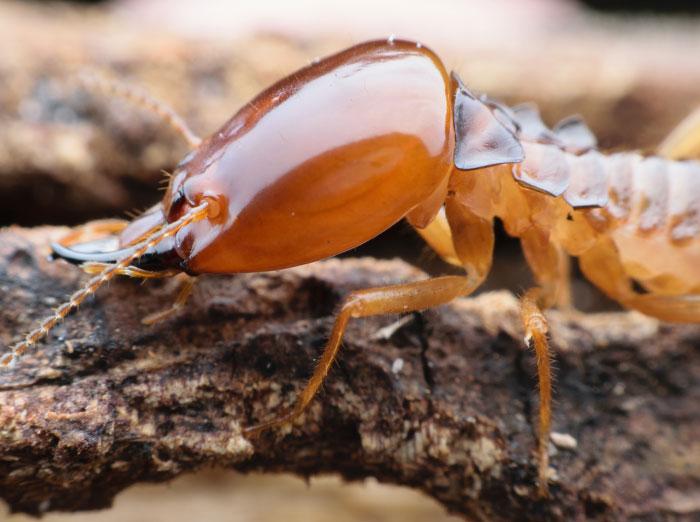
Formosan termites
A type of subterranean termite, formosan termites are originally from China and are considered the most aggressive species, responsible for the most damage. They’ve even earned the nickname of “super termites.” Their colonies can expand with the help of underground tunnels until they’re covering up to 300 feet of soil.
What do formosan termites look like?
Their teardrop-shaped heads make formosan termites stand out from other species. Attached to their heads are antennae which help them find food sources. They range in color from creamy white to brown and are approximately 1/2 in length.
How to identify formosan termites
Formosan termites are very similar to other subterranean termites, making it difficult to distinguish between the two. The warning signs are the same as eastern subterranean termites—mud tubes and discarded wings. The best way to accurately determine what species you’re dealing with is by calling the professionals.
Swarming termites
Swarming termites are the reproductive members of termite colonies and are often mistaken for flying ants. In order to prevent termite damage and costly repair bills, it's important to know the distinction between the two pests. Some differences to look out for include:
- Antennae: Termite swarmers have straight antennae while flying ants have bent antennae
- Wings: Swarmers have wings of equal size; flying ants have slightly larger front wings
- Body: Termites are straight and broad as opposed to ants which have pinched waists
Discarded wings are also common during a termite swarm, which lasts between 30-40 minutes. The swarmers only have temporary wings that help them travel away from their colony, so they eventually fall off. If termites are entering your home, piles of discarded wings can be found near entry points such as a door or window sill.
Why do termites swarm?
When an existing termite colony reaches capacity and is ready to expand, termite swarmers fly off by the hundreds, or in some cases thousands, with one purpose in mind - to reproduce and create new nests. Once conditions are right, the swarmers take flight and pair off. Once paired, the termites lose their wings, mate, and find a suitable place to start a nest.
When do termites swarm?
Swarming times varies by termite species, however most subterranean groups take flight during the daytime in the spring. They typically wait until a day after a rain shower and the sky is cloudy and overcast. The damp soil from the rain helps the termite pairs build their nests while the humidity boosts their survival rates.
How to prevent termite infestations
There are a few things you can do to help prevent termites from invading your home:
- Make sure there is no wood-to-soil contact around your home. Wood that touches the ground is an easy way for termites to find their way into your house. If you have any firewood, wooden decks, or other structures that touch the ground, make sure there is at least a six-inch gap between the soil and the wood.
- Repair any leaks around your home, including leaky faucets, pipes, or gutters. Termites are attracted to moisture, so by fixing any sources of water leakage you can help deter them from coming near your home.
- Inspect the foundation of your home regularly for cracks or gaps. These are potential entry points for termites. If you find any, seal them up with caulk or another suitable material.
- Keep trees and shrubs trimmed away from your home’s exterior. This will help discourage termites from using them as a bridge to get to your house.
- Regularly check your home for signs of termite damage, such as wood that sounds hollow when tapped, mud tubes on exterior walls, or small piles of sawdust. If you find any of these signs, contact a pest control professional right away.
By following these simple tips, you can help prevent termites from taking up residence in your home.
Signs of termites
Some common signs of termite damage include:
- Wood that sounds hollow when tapped
- Cracks or holes in wood
- Paint that is bubbling or peeling
- Sawdust or wood shavings around the home
- Mud tubes on the exterior of your home
If you see any of these signs, it's important to schedule a professional termite inspection right away to have the damage assessed. Termites can cause a lot of damage to a home if they are left untreated, so it's best to nip the problem in the bud as soon as possible.
How to get rid of termites
To get rid of termites it is best to call experienced termite exterminators. While there are products you can buy, they're likely to only provide temporary relief- you need a long-term termite control solution. At Getem Services, we offer professional termite inspections and termite treatment options that can provide your home with the protection it needs. Contact us today to learn more!






















